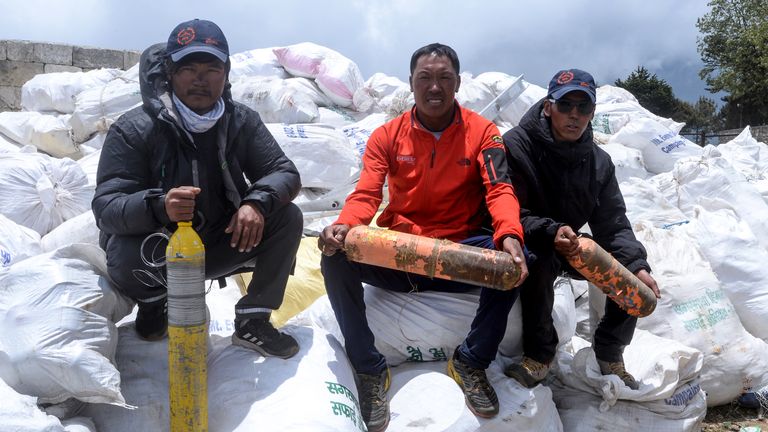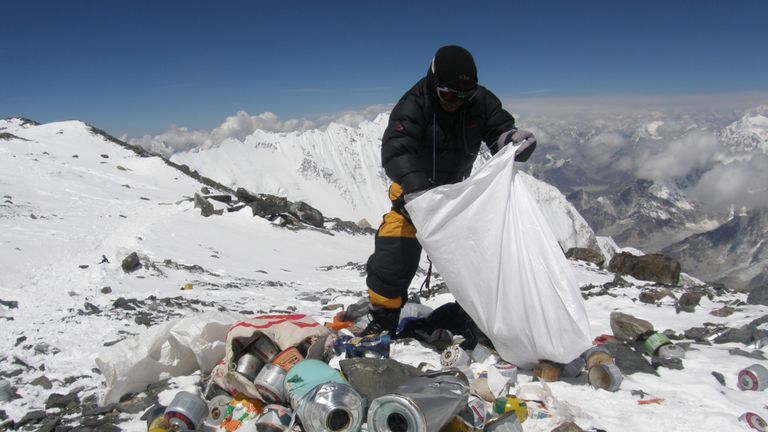Mount Everest’s popularity this season has left the Nepalese government with a huge amount of rubbish to clean up, including human waste, campaigners say.
A record number of climbers have taken on the mountain this year, but it has created a huge task for the ethnic Sherpas who work on the government’s clean-up drive.
The wind has also scattered tents and rubbish across South Col, or Camp 42, which at 8,000m, is the highest campsite on the mountain.
Climbers have left behind their empty oxygen cylinders, food packaging and used rope.
Campaigners clearing Camp Two, which is two levels higher than base camp, believe that nearly 8,000kg of human waste has been left behind from the latest season.
Some climbers avoid using the toilets and just use holes in the snow, allowing waste to fall to the land and threaten the communities below the mountain.
People living in the shadow of Everest use melted snow for their water supply, but are now fearful of contamination.
Dawa Steven Sherpa, who led his own clean-up last month and is a leading figure in the fight against garbage said: “The altitude, oxygen levels, dangerously icy and slippery slopes, and bad weather of South Col make it very difficult to bring such big things as tents down.”
Rather than pack up heavy tents and take them with them, climbers suffering to breathe and fighting sickness simply leave them behind, tearing out the company logo so they can avoid detection.
Steven says that his trips up the mountain have brought down 20,000kg of rubbish since 2008, and estimates that this season, 30 tents have been left on the mountain, as well as nearly 5,000kg of rubbish.
Bringing it back down could prove fatal, due to the conditions.
Ang Doree, head of the Everest Pollution Control Committee said: “The problem is there are no regulations on how to dispose of the human waste. Some climbers use biodegradable bags that have enzymes which decompose human waste but most of them don’t.”
:: A New Climate is a special series of podcasts from Sky News Daily. Listen on Apple Podcasts, Google Podcasts, Spotify, Spreaker
Ang Tshering, former head of the Nepal Mountaineering Association said: “The biggest problem and concern now on Everest is human waste. Hundreds of people are there for weeks who go to open toilets.”
He added that melting conditions at Camp Two create a smell that is sickening to climbers, and the waste will eventually contaminate water sources below and become a health hazard.
Mr Tshering is calling on the government to make the use of biodegradable waste bags mandatory, saying it would spare him and others the unpleasant task of carrying the waste down the slopes.


















